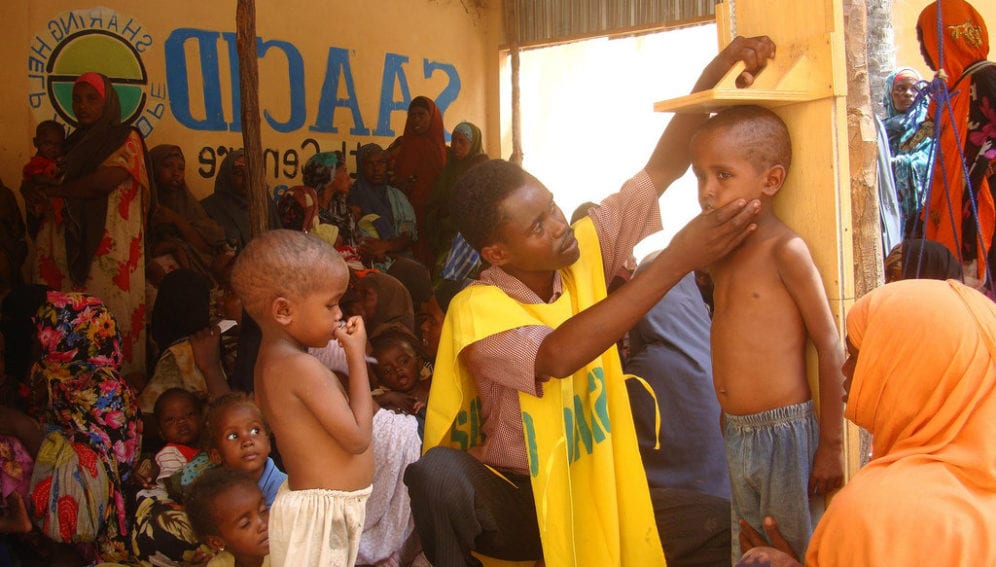Send to a friend
The details you provide on this page will not be used to send unsolicited email, and will not be sold to a 3rd party. See privacy policy.
The lack of vital micronutrients in children's diets — deficiencies that are widespread across much of Sub-Saharan Africa and parts of Asia — is strongly linked to low levels of economic development and has a major impact on productivity, a study has found.
The burden of this "hidden hunger", defined as lack of iron, zinc and vitamin A and other nutrients, accounts for more than a tenth of lost productivity due to illness, disability or early death in the worst-affected countries, according to the paper, written as an advocacy tool and published in PLOS ONE earlier this month (12 June).
The authors mapped the prevalence of anaemia and stunted growth — which are indirect measures of iron and zinc deficiency respectively — and vitamin A deficiency (VAD) in pre-school age children across 149 countries.
All of the 20 countries with the highest levels of hidden hunger are in Sub-Saharan Africa, apart from India and Afghanistan, the authors note.
“Not all countries are taking micronutrient deficiency seriously enough”
Klaus Kraemer
The majority of pre-school age children in these countries have anaemia, stunting and VAD rates of more than 30, 40 and 50 per cent, respectively.
There is also a strong link between rising incidence of hidden hunger and decreasing levels of development. This relationship underscores the importance of micronutrients for improving health and education, while reducing malnutrition, the authors say.
In a second part of the study, the researchers estimate the impact of hidden hunger on populations in 136 countries according to disability-adjusted life years (DALYs) — the metric used by the WHO to measure the burden of disease by years lost to illness, disability or early death.
Sierra Leone, the worst affected country, has 5,870 DALYs for every 100,000 people, while 12.3 per cent of Cote D'Ivoire's DALYs are attributed to deficiencies of iron, zinc and vitamin A.
"Not all countries are taking micronutrient deficiency seriously enough," says Klaus Kraemer, co-author of the paper and director of Sight and Life, a nutrition think tank. "We need to hold policymakers accountable to do something about this terrible situation that keeps millions in poverty."
The results of the study, says Kraemer, highlight that focusing mainly on providing calories to address hunger in a population — as encouraged by the Millennium Development Goals — misses the bigger picture.
The emphasis has to be on the quality of the food, rather than simply on quantity, to ensure good health and so promote development, he says.
Kraemer adds that the study has found major gaps in the data that badly need filling. Much of the data is either out-of-date or incomplete, and may not reflect the true burden of hidden hunger, he says.
Venkatesh Mannar, president of the Micronutrient Initiative, agrees on the need for better data but welcomes the effort to provide policymakers with clear, visual information on an issue that many still do not think is important.
Monika Blössner, a technical officer at the WHO's Department of Nutrition for Health for Development (NHD), says that while global maps are an excellent advocacy tool for raising awareness, they only represent averages.
Ultimately, if real gains are to be made in fighting micronutrient deficiencies, local data must be made much more accessible, she says. "The way forward is to disaggregate the data we have further down to different administrative levels so people can focus on specific areas."














